
Haverstraw is a village incorporated in 1854 in the town of Haverstraw in Rockland County, New York, United States. It is located north of Congers, southeast of West Haverstraw, east of Garnerville, northeast of New City, and west of the Hudson River at its widest point. As of the 2020 census, the population was 12,323.

The U.S. Post Office in Suffern, New York, is located on Chestnut Street between NY 59 and US 202, on the northern edge of the village's downtown business district. It serves the ZIP Code 10901, covering the village of Suffern.
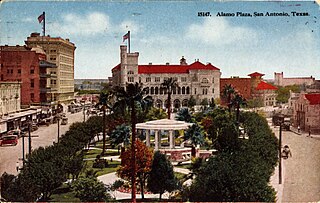
The Alamo Plaza Historic District is an historic district of downtown San Antonio in the U.S. state of Texas. It was listed on the National Register of Historic Places in 1977. It includes the Alamo, which is a separately listed Registered Historic Place and a U.S. National Historic Landmark.

The U.S. Post Office in Haverstraw, New York, is located on Main Street in the center of the village. It serves the ZIP Code 10927, which covers the village.

The United States Post Office in Peekskill, New York, is located on South Street. It is a brick building in the Colonial Revival architectural style, serving the 10566 ZIP Code, which covers the city of Peekskill and some surrounding areas in the town of Cortlandt.

Elston Hall, formerly the Hotel Van Curler, is located on Washington Street in the city of Schenectady, New York, United States. It is a tall brick building constructed in 1925 in the Classical Revival architectural style.

The U.S. Post Office in Saratoga Springs, New York, United States, is located at 475 Broadway at the intersection of Church Street in the center of the city. It is a brick structure built in 1910 in the Classical Revival architectural style, and was designed by James Knox Taylor, supervising architect for the Treasury Department. The post office serves the ZIP Code 12866, covering the city of Saratoga Springs.
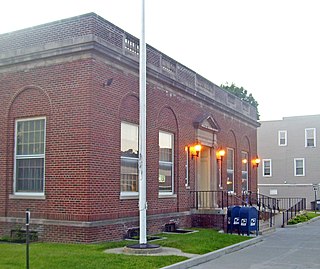
The U.S. Post Office in Hoosick Falls, New York, is located on Main Street a block south of downtown. It is a brick building erected in the mid-1920s, serving the 12090 ZIP Code, which covers the village of Hoosick Falls and surrounding portions of the Town of Hoosick.
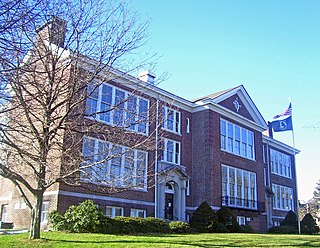
The North Main Street School is located on that street in Spring Valley, New York, United States. It is a brick Colonial Revival building erected in the early 20th century in response to a rapidly increasing school population. Several times since then, it has been expanded. It remained in active use until the 1970s.

The Delta Psi, Alpha Chapter fraternity house is located at 434 Riverside Drive in the Morningside Heights neighborhood of Manhattan, New York City. It was purpose built in 1898 and continues to serve the Columbia chapter of the Fraternity of Delta Psi, a social and literary fraternity.

The former Young Men's Christian Association Building in Albany, New York, United States, is located on Pearl Street. It was built in the 1880s in the Romanesque Revival architectural style, with an existing neighboring structure annexed to it and a rear addition built in the 1920s. It was listed on the National Register of Historic Places in 1978. Two years later, when the Downtown Albany Historic District was designated and listed on the Register, YMCA building was further included as a contributing property.

The Waterbury Municipal Center Complex, also known as the Cass Gilbert National Register District, is a group of five buildings, including City Hall, on Field and Grand streets in Waterbury, Connecticut, United States. They are large stone and brick structures, all designed by Cass Gilbert in the Georgian Revival and Second Renaissance Revival architectural styles, built during the 1910s. In 1978 they were designated as a historic district and listed on the National Register of Historic Places. They are now contributing properties to the Downtown Waterbury Historic District.

The University Club of Albany, New York, was founded at the start of the 20th century. It is currently housed in a Colonial Revival brick building at the corner of Washington Avenue and Dove Street. In 2011 that building was listed on the National Register of Historic Places.

The Drake University Campus Historic District is located in Des Moines, Iowa, United States. The historic district contains six buildings. Five of the buildings are collegiate buildings on the Drake University campus and one is a church. The period of significance is from when the university was founded in 1881 to the end of the presidency of Hill M. Bell in 1918. The historic district has been listed on the National Register of Historic Places since 1988. It is part of the Drake University and Related Properties in Des Moines, Iowa, 1881—1918 MPS.
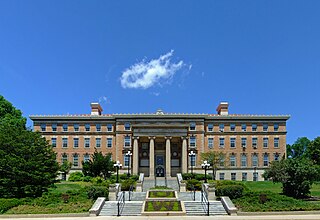
Agriculture Hall is a Beaux Arts-style building on the campus of the University of Wisconsin–Madison built in 1903. In 1985 it was added to the National Register of Historic Places for its architecture and because it housed the first Department of Agricultural Economics in the U.S. and the first department of genetics.

The Rensselaer Carnegie Library in Rensselaer, Indiana is a building from 1905. It was listed on the National Register of Historic Places in 1994. The building no longer functions as a library; since 1992 it houses the Prairie Arts Council, a local performing arts organization.
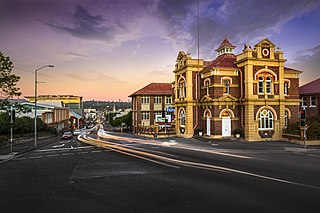
Queen Victoria Silver Jubilee Memorial Technical College is a heritage-listed technical college at 88 Limestone Street, Ipswich, City of Ipswich, Queensland, Australia. It was designed by architect George Brockwell Gill and built from 1897 to 1937. It is also known as Ipswich TAFE College and Ipswich Technical College. It was added to the Queensland Heritage Register on 21 October 1992.

Alexander Pirnie Federal Building is a historic post office, courthouse, and custom house located at Utica, Oneida County, New York. It was named for Congressman Alexander Pirnie in 1984. It was listed on the National Register of Historic Places in 2015.

The University of Michigan Central Campus Historic District is a historic district consisting of a group of major buildings on the campus of the University of Michigan in Ann Arbor, Michigan. It was listed on the National Register of Historic Places in 1978.
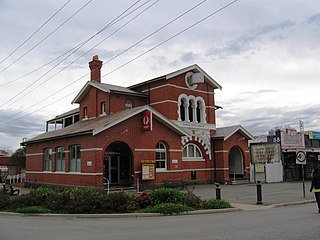
Euroa Post Office is a heritage-listed post office at 90 Binney Street, Euroa, Victoria, Australia. It was designed by John Thomas Kelleher of the state Public Works Department, possibly with the assistance of A. J. McDonald, and built in 1890 by George Diggle. It was added to the Australian Commonwealth Heritage List on 22 August 2012.






















